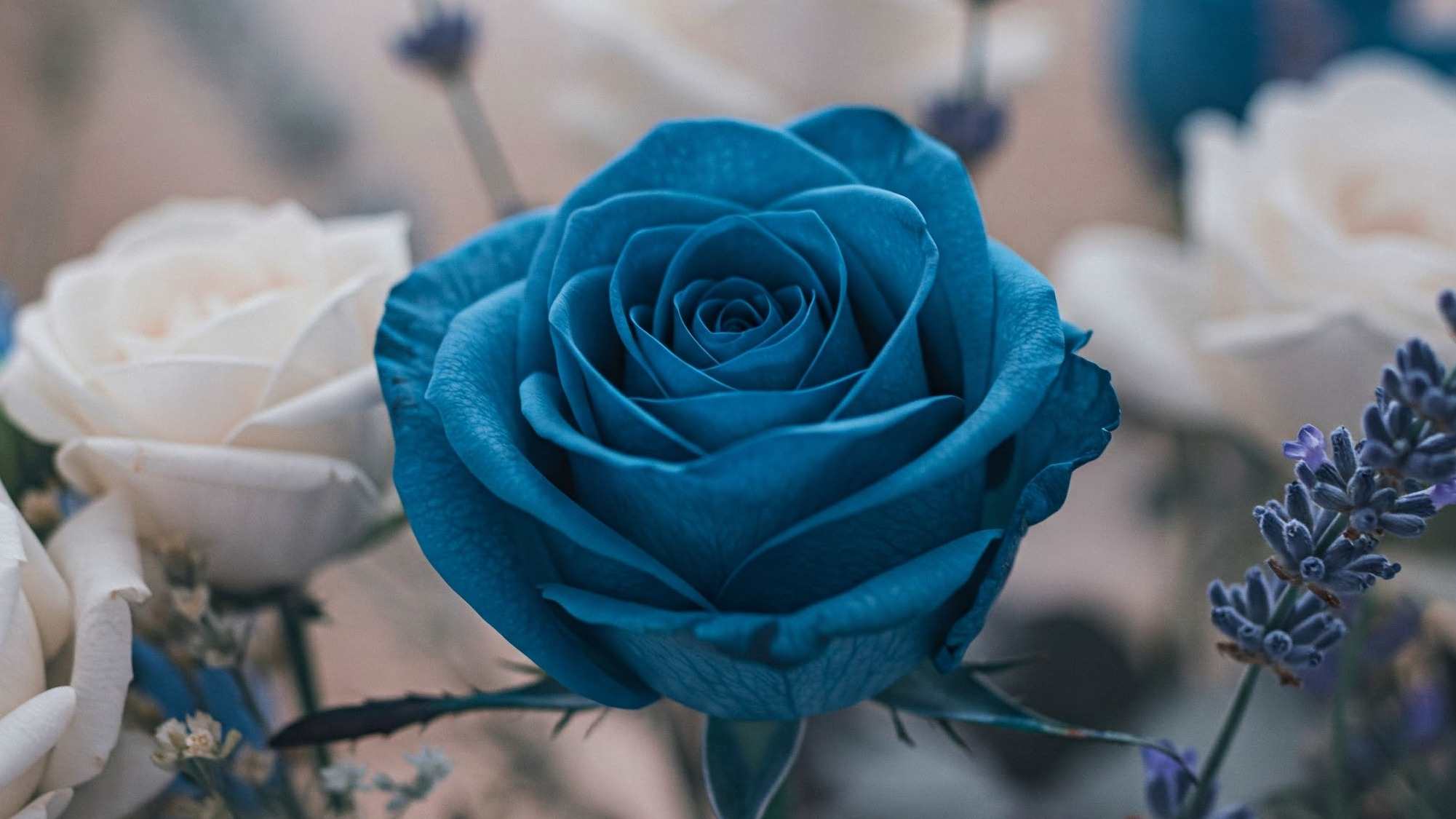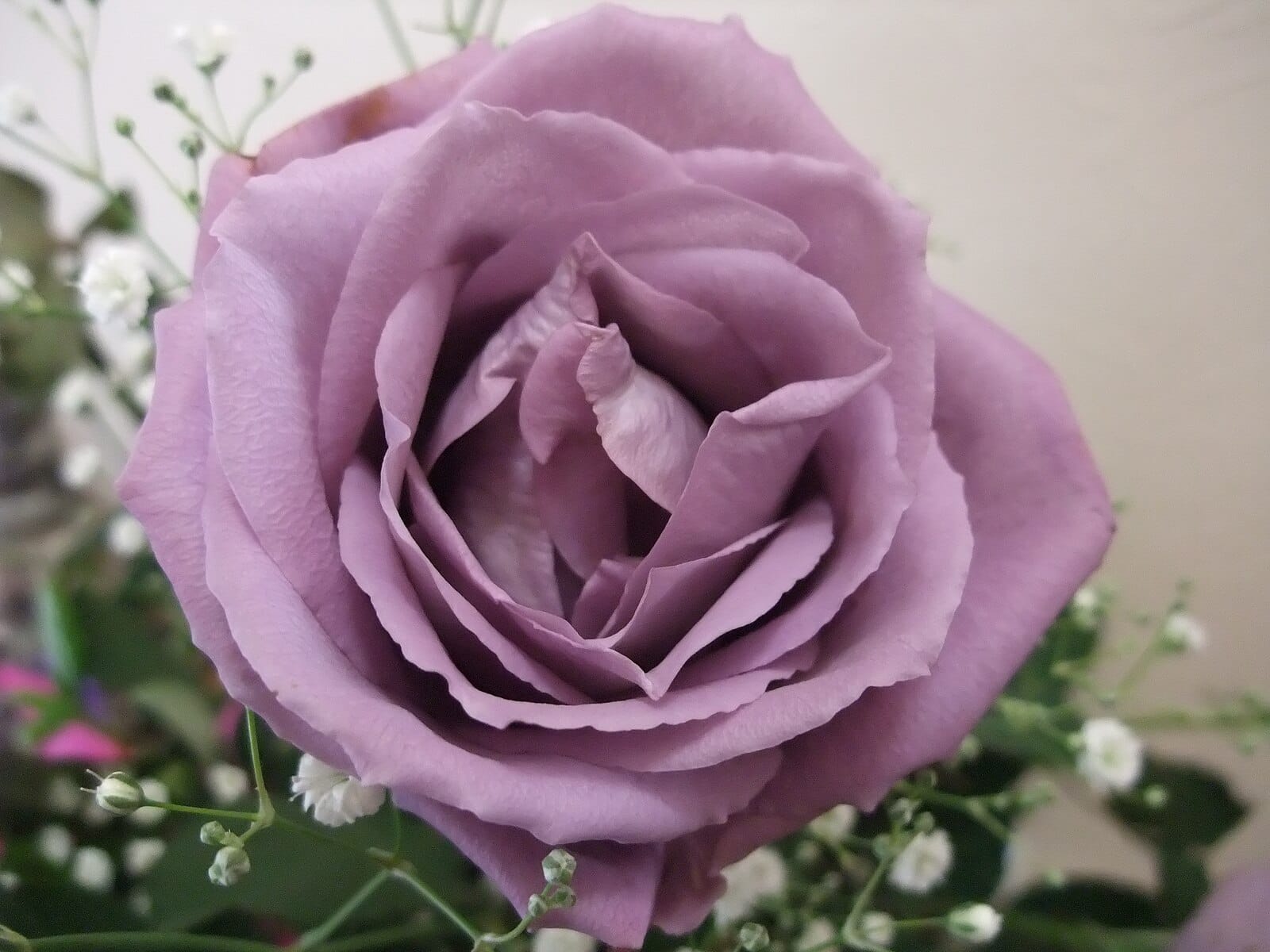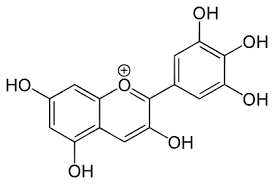Why don't we have blue roses yet?

A true, genetically blue rose. Its creation would be an incredible, enviable contribution to the global flower market, and a mark of humanity’s biotechnological understanding. A gap that has been clearly noted for decades, blue roses are a symbol of the unattainable, the elusive, described by some florists as the “holy grail” of flowers. So, how come they don’t exist, despite all our genetic and biological advancements? Has anyone ever tried? And and they even possible to create?
A brief history

It turns out, blue roses are just as elusive as they seem. The existence of dyed blue roses has been cited as early as the 12th century, and is currently the only way of achieving a truly blue rose. They are mentioned in the Kitāb al-Filāḥa, later translated and officially mentioned in Clément-Mullet’s “Le livre de l’agriculture”, published in 1864, which describes dying roses a “deep azure” by rubbing an indigo dye into the roots. A symbol of desire and the unattainable, blue florals, such as the hypothetical blue rose, were an integral symbol during the Romantic period, with that symbolic influence continuing today.
However, scientifically, only one significant attempt has ever been made to create a blue rose, when two companies, Florigene and Suntory, banded together, and attempted to create it in the 1990s through genetic modification. After managing to modify roses to produce the necessary blue pigment, delphinidin, they released their “blue” rose, called "Applause” in 2002. Despite efforts though, the full expression of blue colour was yet to be achieved, with Applause resulting in a more lilac, or grey-purple hue, instead of the elusive true blue.
Why have they been so hard to create?
It turns out that the mechanisms which determine a flower’s ultimate colour are often complex, and involve multiple different conditions and biological molecules, which all contribute to the colour that flower expresses. While Suntory and Florigene made significant progress, several major hurdles complicated its full success; primarily, enabling the production of the blue anthocyanin, delphinidin, allowing that dye to persist in the petals, and encouraging and maintaining a high level of its expression in the rose.

Delphinidin & Anthocyanins
To understand delphinidin, we need to first understand anthocyanins. Anthocyanins are naturally occurring, water-based pigments, generally accumulating in the vacuoles of plant cells. As a class of compounds, they provide colouration for many plants, particularly in flower petals and fruits, and are integral for allowing a plant to attract other organisms, like insects for pollination or fruit consumption in seed dispersal. A key point to note is that the same anthocyanin can appear a different colour in different species, as they are highly sensitive to environmental changes, like light, temperature, and pH. This effect is best demonstrated in the well-known classroom experiment, where students use red cabbage juice as a natural pH indicator. When the red cabbage’s anthocyanins are exposed to changes in pH, it causes them to change structure, and thus their colour.
Delphinidin in particular is usually associated with giving plants a blue to purple hue, and is found in peonies, violets and larkspurs. Delphinidin was, and is, the most promising candidate for our blue roses, as it can be synthesised from chemical precursors the rose can already create. This makes introducing a delphinidin-producing pathway much more intuitive, as plenty of the “infrastructure” within the rose already exists for its synthesis and distribution.

Problems with Genetics
Firstly, the genus Rosa lacks the gene allow it to naturally produce delphinidin. This makes cross-breeding the colour impossible, meaning it must be introduced manually through some form of genetic modification. This was achieved by Florigene, by extracting this gene from pansies, and splicing it into the rose. However, this was only a first test, and intentionally didn’t account for the other, native anthocyanins present in the petals. This caused the colour to be more of a mix of reds and blues, and creating a dark burgundy – an incredible advancement for the time, but still far from our blue rose. In order to remove any other colouration, Suntory had been to inhibit the production of these native pigments.
To solve this, Florigene used RNA interference, a method which allows scientists to essentially de-activate or “silence” certain genes, stopping them from performing their functions. This happens naturally in cells, so they were then able to splice in a gene which would silence the production of a crucial colour producing enzyme, dihydroflavonol 4-reductase (DFR), resulting in what would be completely white rose. Then, to enable delphinidin’s production, they introduced an altered version of this gene taken from an iris flower. That gene would not be blocked by the RNA interference, but would still allow delphinidin to be produced. These three edits resulted in the “Applause” Suntory blue rose, as seen above, and contained very high levels of delphinidin in the petals, (reaching up to 95%) – just what we would want.
In theory, these three edits should have created a truly blue rose. However, the RNA interference failed to completely inhibit the original DFR’s effect, causing the rose to retain some of its natural pigmentation. We still end up with a beautiful rose, but not a blue one. In fact, there’s another reason why it didn’t fully succeed.

Rose petal phytochemistry
The final, trickiest reason as to why blue roses have been hard to create, is the rose itself. An inevitability about adding delphinidin to the rose, is that the conditions within a rose’s petals favour its naturally occurring pigments. This is important as anthocyanins, like previously mentioned, are highly sensitive to changes in pH, often shifting to completely different colours and forms under more acidic or alkaline conditions.
Roses naturally have quite an acidic vacuolar pH – around 4.5 – which generally favours red coloured forms of anthocyanins, like the native pelargonin and cyanin. This increased acidity shifted the newly-produced delphinidin away from blue, and and more towards magenta. Simultaneously, the lower pH causes delphinidin to degrade, shifting the balance of our blue anthocyanin towards colourless byproducts, and thus decreasing its concentration. Both the partially failed genetic modification, and the low pH combine to inhibit a full, vibrant expression of delphinidin.
Furthermore, delphinidin also becomes less chemically stable in the requisite higher pH, and without any other natural methods to stabilise it, pH becomes an immensely limiting factor. This results in a fine biological balance, where the environment must be sufficiently alkaline to present as much delphinidin blue as possible, without it altering it or breaking it down.
So, why not just cross breed for higher vacuolar pH? Unfortunately, roses have proven to be genetically limited in this factor, and introducing a gene to alter this manually would less than ideal for the rose’s pre-existing biological processes, without further gene editing to compensate. This makes it logistically difficult and generally implausible.

Some finishing thoughts
So, it looks like we won’t be getting our blue roses any time soon. At our current understanding of rose biochemistry and genetic modification, it will be sometime before we achieve it. This problem is also not unique to roses; blue colouration in nature is often rare due to the lack of stable blue pigments, and the difficulty of providing conditions in which they can exist. But who knows? Maybe in thirty years time, we’ll have gardens brimming with blue flowers – removing that thorn in the side for horticulturalists.
Sources
Cover image - Patel, 2025
Fig. I - New York Public Library, 1935
Fig. II - Wikimedia Commons, 2023
Fig. III - Wikimedia Commons, 2025
Fig. IV - Slater, 2025
Fig. V - Husain et al., 2022